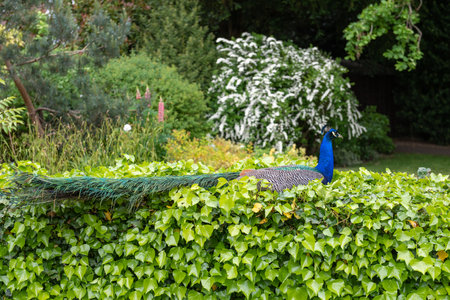Understanding British Winter Weather Patterns
When it comes to safeguarding winter crops in Britain, a good grasp of our unique weather patterns is essential. Across the country, winter conditions can vary quite a bit—from the milder, wetter climates of the southwest to the harsher, frost-prone landscapes of Scotland and the northeast. In southern England, temperatures tend to hover just above freezing for much of the season, though sharp overnight frosts are not uncommon. The Midlands and northern regions often experience longer periods of sub-zero temperatures, coupled with biting winds that can sap warmth from both soil and plant alike. Meanwhile, coastal areas may benefit from slightly warmer air currents but must contend with higher humidity and frequent rain, which can invite fungal issues. Each region’s particular set of challenges means that what works for brassicas or root vegetables in Cornwall might not hold up in Yorkshire or Aberdeenshire. Understanding these regional differences is crucial because some crops—like hardy leeks and parsnips—can withstand repeated frosts, while more delicate varieties such as winter lettuce or young broad beans require extra vigilance. By tuning into local forecasts and knowing how these shifting conditions affect your patch, you’ll be better equipped to tailor your protective measures and keep your crops thriving through the chilliest months.
2. Selecting Hardy Winter Crops Suitable for Britain
When it comes to facing the unpredictable British winter, the key to a successful harvest lies in choosing crops that are naturally robust and well-suited to the local climate. Not all vegetables can cope with the persistent frost and damp conditions we so often experience from November through March. Therefore, selecting time-tested varieties—often those cherished by generations of British gardeners—is essential for both ease of care and consistent yields.
Guidelines for Choosing Winter-Resilient Crops
First, consider traditional British favourites known for their hardiness. Brassicas like kale, cabbage, and Brussels sprouts have long been staples on winter allotments, thanks to their ability to not just survive but thrive in cold snaps. Root vegetables such as parsnips, swedes, and leeks also fare remarkably well, developing richer flavours after exposure to frost. For leafy greens, choose varieties bred for winter resilience—winter spinach and hardy lettuce types are good options.
Classic Hardy Varieties
| Crops | Recommended Variety | Key Features |
|---|---|---|
| Kale | Cavolo Nero, Curly Kale | Tolerates hard frosts; continuous cropping |
| Brussels Sprouts | Bedford Fillbasket, Evesham Special | Withstands wind and cold; traditional favourite |
| Cabbage | Savoy, January King | Disease resistant; holds well in wet soils |
| Leeks | Blue Solaise, Musselburgh | Handles saturated ground; slow to bolt |
| Parsnips | Gladiator F1, Tender & True | Sweeter after frost; easy to store in ground |
| Winter Spinach | Popeye F1, Giant Winter | Tolerates short days and cold spells well |
| Swede (Rutabaga) | Invitation F1, Helenor | Excellent cold weather storage; reliable cropper |
Local Wisdom: Listen to the Old Hands!
If you’re new to winter gardening or unsure about a particular variety’s performance in your area, don’t hesitate to consult seasoned gardeners at your local allotment or gardening club. Many will gladly share advice about which crops have stood up best against recent harsh winters or persistent rainfall. Sometimes it’s these nuggets of experience that save you from disappointment come February.

3. Soil Preparation and Raised Beds
When it comes to outsmarting the British winter, preparing your soil and using raised beds are time-honoured tricks that go back generations on local allotments. Good drainage is absolutely key — there’s nothing worse than seeing your hard work succumb to a heavy frost just because waterlogged soil turned into an icy trap for roots. One classic tip from seasoned gardeners is to incorporate plenty of organic matter, like well-rotted manure or garden compost, into your plots during autumn. Not only does this improve the structure and warmth of the soil, but it also helps with drainage so excess water doesn’t hang about.
Raised beds are another staple across British gardens, especially in wetter regions. By lifting your planting area above ground level, you help cold air drain away from tender crops and encourage soil to warm up quicker in the weak winter sun. Many allotment holders swear by lining their raised beds with old bricks or timber — both materials absorb heat during the day and slowly release it overnight, giving your veg a cosy buffer against sudden chills.
If you’re just starting out, consider orienting your beds north to south to maximise sunlight exposure through those short days. And don’t forget to mulch! A thick layer of straw, leaf mould, or even shredded newspaper can make all the difference by keeping soil temperatures more stable and fending off frost heave. These simple steps — tried, tested, and passed down over countless tea breaks on the allotment — will set your winter crops up for success even when Jack Frost comes calling.
4. Protective Coverings: Cloches, Fleece, and Mulch
When the mercury dips and the British weather turns unforgiving, experienced gardeners know it’s time to give winter crops a helping hand with protective coverings. Both traditional and modern materials have a place in the UK garden shed, each offering unique benefits against frost and biting winds. Let’s take a closer look at the most common options—cloches, horticultural fleece, and mulch—and how best to use them for thriving winter veg.
Cloches: Time-Honoured Shields
Cloches have been used for generations in Britain. Traditionally fashioned from glass or bell-shaped plastic, they act as miniature greenhouses, trapping warmth around young plants like lettuces, cabbages, and early peas. Position cloches before dusk to prevent heat loss overnight, ensuring edges are firmly anchored against gusty winds. For a more sustainable approach, many British gardeners now repurpose old jam jars or create DIY cloches from cut-down plastic bottles—a thrifty trick well worth passing down.
Horticultural Fleece: Lightweight but Mighty
Modern horticultural fleece is a staple in most UK allotments. This breathable fabric can be draped over beds or hoops to provide an insulating layer while still letting light and moisture reach your crops. Fleece is particularly handy for covering rows of carrots, parsnips, and brassicas during sudden cold snaps or when frost is forecast. Secure the edges with stones or pegs so that the notorious British wind doesn’t whip it away overnight.
Mulch: Nature’s Blanket
Mulching is another essential practice that’s stood the test of time. By spreading organic matter such as straw, well-rotted manure, or compost around the base of your crops, you create a natural barrier against soil temperature fluctuations. This not only shields roots from frost but also enriches the earth come springtime—a win-win for any British grower. Here’s a handy comparison:
| Material | Main Benefit | Common Crops |
|---|---|---|
| Cloches (Glass/Plastic) | Traps heat and protects individual plants | Lettuce, cabbage seedlings |
| Horticultural Fleece | Lightweight cover for rows; allows air & water through | Carrots, parsnips, brassicas |
| Mulch (Straw/Compost) | Insulates soil; adds nutrients as it breaks down | Root vegetables, leeks, onions |
A Few Tips from Experience
Always check your coverings after heavy rain or snow—a quick shake off can prevent collapse and rot. Rotate materials each year where possible to minimise disease build-up. And remember: sometimes old-fashioned solutions like straw mulch or reused jars are every bit as effective as shop-bought products in the unpredictable British climate.
5. Timing and Techniques for Sowing and Harvesting
If there’s one thing British gardeners have always agreed on, it’s that timing is everything when it comes to winter crops. Our unpredictable weather, with its biting winds and sudden frosts, can catch even the most seasoned growers off guard. The old saying, “Sow in time, reap in prime,” still rings true today. When planning your winter sowings, aim for late summer to early autumn—typically from August through September for most hardy vegetables like brassicas, leeks, and winter salads. This window gives young plants enough warmth and sunlight to establish themselves before the dark chill sets in.
As my grandfather used to say, “Never trust a clear October night.” Sudden drops in temperature can be disastrous for tender seedlings, so keep an eye on local weather forecasts and traditional signs—like the first morning mists or a flock of starlings gathering overhead—which often signal that colder nights are coming. If you’re in the north of England or in higher ground, consider sowing a week or two earlier than those further south.
For root vegetables such as carrots and parsnips, lift them before the ground becomes hard with frost. Old hands recommend harvesting these crops just after a light frost but before a hard freeze sets in; the slight chill actually sweetens their flavour. However, if you leave them too long, you might find yourself wrestling frozen veg out of solid earth—a thankless task! Store lifted roots in boxes of sand or dry compost in a cool shed to keep them fresh throughout the winter months.
When it comes to overwintering onions or garlic, plant sets in mid-autumn. They’ll put down roots before growth slows with the cold and will be ready to surge ahead come spring. For leafy greens like spinach and chard, stagger your sowings every couple of weeks from August through October—this way you’ll have a steady supply even if one batch falls foul of an early frost.
Remember too that tradition holds many hidden gems: some older gardeners swear by sowing broad beans on Guy Fawkes Night (5th November), believing they stand up better to winter cold. These folk practices may not always align with modern calendars, but they’ve been passed down for good reason—our forebears observed patterns in nature that remain relevant today.
In short, match your sowing and harvesting dates to both the calendar and your local microclimate. Keep your ear to the ground (and perhaps a word with your neighbour over the garden fence), blending practical experience with time-honoured wisdom. It’s this blend of careful timing and inherited know-how that helps British gardens thrive through even the harshest winters.
6. Monitoring, Maintenance, and Community Wisdom
If there’s one thing that decades of gardening in Britain has taught us, it’s that vigilance is the backbone of a thriving winter plot. The weather here has a habit of turning on a sixpence—what starts as a mild morning can freeze over by nightfall. That’s why keeping a watchful eye on your crops is not just advisable; it’s essential. Regularly checking covers for tears, ensuring mulch hasn’t blown away, and observing your plants for any signs of distress will help you nip problems in the bud before they escalate. Adjustments are often needed as the season progresses; perhaps a cold snap calls for an extra fleece layer or you notice pooling water after heavy rain, requiring improved drainage. No solution is set in stone—adaptability is key.
Beyond tending to your own patch, remember that gardening wisdom in Britain has always been a communal affair. Don’t hesitate to chat with neighbours at the allotment or exchange tips over a cuppa at the local gardening club. Older hands often have invaluable insights on microclimates or tried-and-tested frost-busting tricks handed down through generations. Sharing successes and failures alike not only strengthens your knowledge but also keeps our rich horticultural heritage alive and well. In short, combine attentive maintenance with community spirit, and you’ll give your winter crops every chance to flourish despite whatever British weather throws your way.


